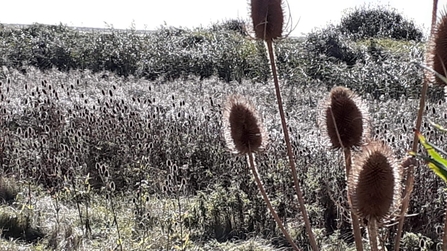At last I am once again at the Trust’s Spurn Point reserve. Even without the travel restrictions of the last 18 months, Spurn is not the easiest reserve to get to for most Yorkshire folk, but it’s well worth those extra miles to ‘land’s end’.
Spurn has military and maritime history, landscape and geological delights, wild weather, amazing birdlife - especially during autumn and spring migration periods, and more. A rather good cafe too. I love my wild nature, but there’s nothing like a tasty brekkie beforehand, or coffee and cake after!
I lead Wellbeing Walks with the Trust, and we focus on the senses when we’re walking; I’m on my own today, but I do that anyway. Although standing still and simply focusing on breathing for a few moments is important too. So, after the practicalities of rucksack, sunglasses and scarf (all seasons in one day at Spurn!), I close my eyes, take a few deep breaths, then have a look around. A look around to absorb what I see, rather than to look where to go, or to look for something.
Facing the point, the river - tide out - is to my right. Birds, birds and more birds feeding in the estuarine mud. Many I can’t see well enough, or know well enough, to name, but I can identify curlew and black-tailed godwits, and little egrets. And gulls, of course. The black-backed bully boys as I call them, strutting their stuff - one of them trailing something long and writhing across the mud. I shudder, and decide to close my eyes again to experience more fully the sounds of this narrow stretch of land, surrounded as it is by sea and river.

